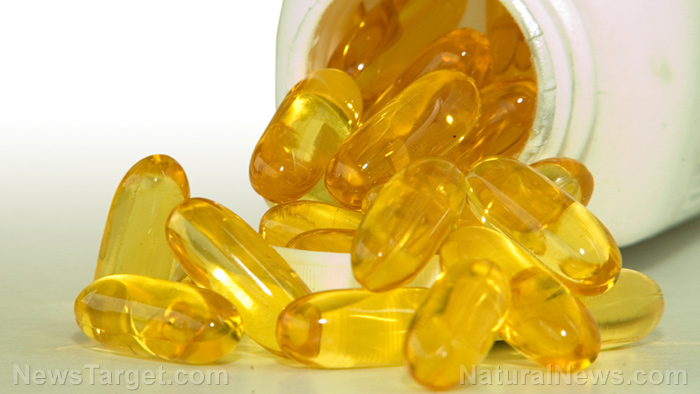The anti-photoaging activity of sugar palm
12/11/2018 / By Ellaine Castillo

As a person ages, maintaining healthy looking skin becomes a grueling task. However, this becomes especially true once he steps outside, where external factors the sun’s ultraviolet (UV) rays can cause even more skin damage. This is the reason many people invest in products to improve their skin’s condition. In 2017, the global cosmetic skincare market reached more than $138.09 billion, and this value is only expected to rise steadily over the next few years.
Cosmeceuticals are a rising trend in the beauty industry. These are cosmetics derived from natural products that have medical benefits. Most aim to improve skin tone and reduce aging by delivering nutrients with benefits — such as potent antioxidant and anti-photoaging effects. Researchers from Atma Jaya Catholic University in Indonesia found a potential source of beneficial compounds for skin health in the sugar palm fruit (Arenga pinnata).
Sugar palm is native to tropical countries in Asia. In the Philippines, people use it as a traditional remedy for indigestion, bladder problems, colds, sore throat, and cold sores. The sugar palm fruit also exhibits in vitro anti-aging activity. However, the compounds responsible for this effect have not been identified before this study. One of the potential active ingredients in the sugar palm fruit is the polysaccharide galactomannan. This compound is associated with health benefits like anticancer and antioxidant activities. Moreover, galactomannan isolated from the fungi torula (Candida utilis) exhibited potential anti-photoaging activity.
In this study, which appeared in Pharmacognosy Research, researchers extracted galactomannan from sugar palm fruit and assessed its potential skin benefits. One of the properties that they looked at was its ability to whiten skin. This was determined through a tyrosinase inhibition assay since this enzyme stimulates the cells to produce melanin, which leads to darker skin at higher concentrations. The researchers observed that galactomannan inhibited tyrosinase activity by up to 60 percent, proving that it has whitening effects.
Another property that the researchers observed is sugar palm fruit’s antioxidant activity. This was determined based on the galactomannan fraction’s chelating activity. The researchers found results that were consistent with previous studies showing that the fruit has potent antioxidant activity.
Lastly, the authors of the study looked at the anti-photoaging activity of the extracts against cells exposed to UV. They saw that galactomannan was able to protect the cells from injury by preventing the expression of more than 90 percent of collagenases, namely matrix metalloproteinase 1 and 13. These enzymes, which break down collagen, are responsible for damaging UV irradiated cells.
Overall, these results show that galactomannan from sugar palm fruit has whitening, antioxidant, and anti-photoaging effects. These prove that the fruit can be further developed into cosmeceutical skincare products. (Related: Phytochemicals shown to protect skin from sun damage.)
The dangers of chemical-based cosmetics
Many people go through great lengths to be beautiful. However, many of the chemical-based products on the market are associated with an increased risk of different health problems. You wouldn’t want to put your health at risk to be beautiful, so it would better to shift to natural cosmetics. Some of the most common chemicals found in cosmetics include the following:
- Phthalates — These chemicals are known endocrine disruptors that can lead to endometriosis, early puberty, and infertility. Moreover, phthalates also affect the thyroid in a way that increases the risk of obesity.
- Toluene — Exposure to this chemical can induce temporary neurological effects like dizziness, hallucinations, and headaches. Toluene can also affect fetal development in pregnant women.
- Formaldehyde — Cosmetics that contain formaldehyde can irritate the skin, eyes, nose, and the respiratory tract. What’s even more worrisome is that high amounts of it could lead to cancer.
For more articles about natural cosmetics, visit Cosmetics.news
Sources include:
Submit a correction >>
Tagged Under:
anti-aging, anti-photoaging, antioxidant, Arenga pinnata, cosmeceuticals, Cosmetics, galactomannan, hyperpigmentation, natural cosmetics, radiation, skin health, sugar palm fruit, Ultraviolet, UV, UV radiation, whitening effect
This article may contain statements that reflect the opinion of the author
RECENT NEWS & ARTICLES
AgingSecrets.News is a fact-based public education website published by Aging Secrets News Features, LLC.
All content copyright © 2018 by Aging Secrets News Features, LLC.
Contact Us with Tips or Corrections
All trademarks, registered trademarks and servicemarks mentioned on this site are the property of their respective owners.





















